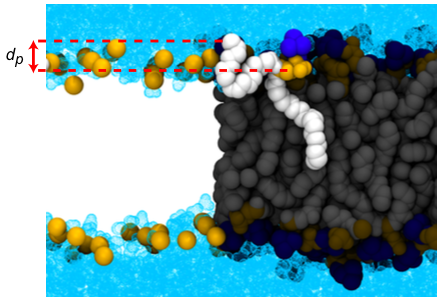Presenter:
Mukarram Tahir
Abstract:
Recent work has established that gold nanoparticles functionalized with a combination of hydrophobic and hydrophilic ligands can stably embed inside biological membranes through a mechanism that does not involve endocytosis and does not violate membrane integrity. The fusogenic ability of these nanoparticles enables their use in therapeutic applications that operate on a single-cell resolution, such as targeted drug delivery, bio-imaging and bio-sensing. Likewise, the physiochemical similarity between these particles and amphiphilic membrane proteins underscores their potential as a platform for developing synthetic analogues to these membrane-embedded proteins. The rate limiting process for membrane insertion of these nanoparticles, however, is stochastic lipid tail protrusions from the membrane coming into contact with hydrophobic material on the nanoparticle surface. Systematically optimizing the fusogenic ability of monolayer-protected nanoparticles hence requires extensive understanding of these lipid fluctuations, and is the subject of this work. We use atomistic molecular dynamics simulations to analyze the incidence of tail protrusions in lipid bilayers as a function of membrane composition, inhomogeneity, curvature and hydration, and highlight conditions that are associated with enhanced ability of lipid tails to protrude into solvent and develop hydrophobic contact with monolayer functionalized nanoparticles.
